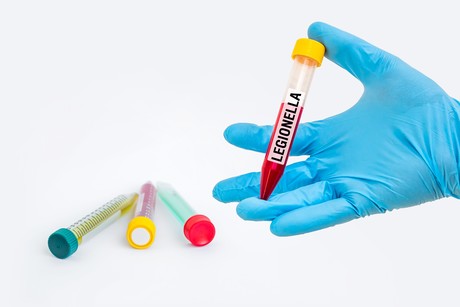Patients in healthcare facilities at risk for legionnaire's disease

A US study has found a concerning level of legionnaire’s disease present in healthcare facilities, highlighting a possible deadly risk to patients from exposure to disease.
Conducted by the Centers for Disease Control and Prevention (CDC), the study included data from 21 US jurisdictions, of which 76% reported healthcare-associated cases of Legionella, according to the CDC’s Vital Signs report.
Legionnaire’s disease is a serious lung infection (pneumonia) contracted by breathing in small droplets of water containing Legionella bacteria. While most cases of legionnaire’s disease are not associated with healthcare facilities, 1 in 4 people who get the infection from a healthcare facility will die. This death rate is higher than for people who get the infection elsewhere.
Among the legionnaire’s disease cases definitely associated with health care facilities:
- 80% were associated with long-term care facilities, 18% with hospitals and 2% with both.
- Cases were reported from 72 unique facilities, with the number of cases ranging from one to six per facility.
- 88% were in people 60 years of age or older.
Legionella growth occurs in building water systems that are not managed adequately and where disinfectant levels are low, water is stagnant or water temperatures are ideal for growth of bacteria.
Most healthy people will not contract legionnaire’s disease after be
To help counter the disease, the CDC released a toolkit in 2016 for building owners and managers: Developing a Water Management Program to Reduce Legionella Growth & Spread in Buildings: A Practical Guide to Implementing Industry Standards. Based on ASHRAE Standard 188, a document for building engineers, the toolkit provides a checklist to help identify when a water management program is needed, examples to help identify where Legionella could grow and spread in a building, and ways to reduce the risk of Legionella contamination. The toolkit also includes examples relevant for healthcare facilities.
In Australia, local guidelines are available from the Department of Health: Legionellosis: National guidelines for public health units.
There are also a number of Australian Standards related to identifying and preventing diseases such as legionnaire’s, including:
- AS 5132:2017 Waters — Examination for Legionella spp. including Legionella pneumophila — Using concentration
- AS 5059-2006 (R2016) Power station cooling tower water systems — Management of legionnaires’ disease health risk
- AS/NZS 3666.2:2011 Air-handling and water systems of buildings — Microbial control Operation and maintenance
Specialised LGBTQ+ health service to open in NSW
ACON, a New South Wales-based health promotion organisation focused on LGBTQ+ and HIV health, is...
New $54 million integrated cancer centre opens
Developed by Northwest Healthcare Properties, the new facility has the capacity to deliver more...
Flexibility, a cornerstone of future hospital design: report
Flexibility is becoming a cornerstone of future hospital design, allowing healthcare...










